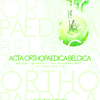Demineralized bone matrix versus autogenous bone graft for thoracolumbar anterior single-level interbody fusion
biological fusion ; demineralized bone matrix (DBM) ; iliac crest bone graft ; fracture ; thoracolumbar ; randomized controlled pilot study
Published online: Feb 09 2021
Abstract
In thoracolumbar fracture treatment, autogenous iliac crest bone grafting (ICBG) is the standard procedure to achieve anterior single-level fusion. To avoid associated problems of graft harvesting, intervertebral cages are an alternative, but cannot provide biological fusion. Therefore, investigations on fusion-enhancing adjuncts to cages are performed to find biomaterials with biological features comparable to bone grafts. This study is the first prospective randomized trial in literature to compare the results of demineralized bone matrix (DBM putty) plus cage vs. ICBG in anterior fusion procedures for thoracolumbar fractures.
Thirty patients underwent posterior bisegmental instrumentation and anterior stabilization by (I) titanium cage with DBM putty (n=15), or (II) autogenous ICBG (n=15).
After nine months, biological fusion occurred in 80% and 57% (p≈0.24), respectively. Extent of clinical recovery was 82.5%±17.3% vs. 80.4%±12.9% (p≈0.90). Loss of kyphosis correction amounted to -1.4°±2.1° vs. -1.6°±4.1° (p≈0.91).
Fracture treatment with DBM plus titanium cage showed promising 9-months-results in this pilot study on 30 individuals.
